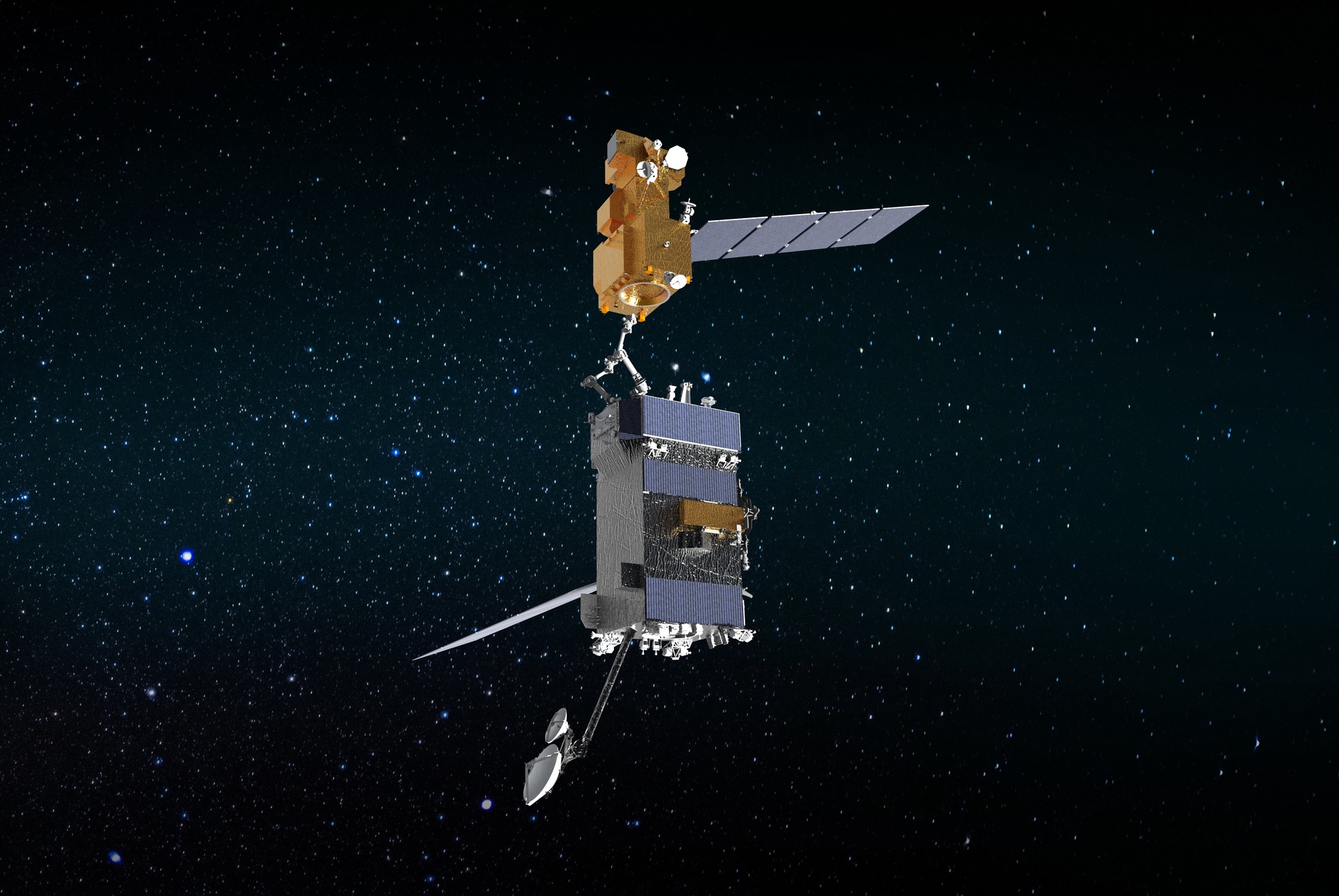
WASHINGTON — NASA has canceled a multibillion-dollar project to demonstrate satellite servicing technologies that had suffered extensive delays and cost overruns.
In a brief statement March 1, NASA announced it was ending the On-Orbit Servicing, Assembly and Manufacturing (OSAM) 1 mission. OSAM-1 was being developed to refuel the Landsat 7 spacecraft and then perform the in-orbit assembly of a Ka-band satellite antenna.
NASA said it was canceling OSAM-1 “due to continued technical, cost, and schedule challenges, and a broader community evolution away from refueling unprepared spacecraft, which has led to a lack of a committed partner.”
The agency said that, after formal congressional notifications of its decision, it would start the process for an orderly shutdown, which would include transferring hardware and “pursuing potential partnerships or alternative hardware uses.”
NASA said it would also review how to mitigate the impact of the cancellation on the workforce at the Goddard Space Flight Center, which was leading OSAM-1. NASA spokesperson Jimi Russell said there are approximately 450 NASA employees and contractors working on OSAM-1, and that NASA “is committed to supporting project workforce per plan through fiscal year 2024.”
OSAM-1 started about a decade ago as Restore-L, with the goal of launching as soon as 2020 to refuel Landsat 7. The mission was renamed OSAM-1 in 2020 with the addition of payloads to perform in-space assembly and manufacturing activities.
The mission, though, suffered significant cost overruns and delays. As of April 2022, the mission’s total cost, once projected to be between $626 million and $753 million, had grown to $2.05 billion and its launch delayed to December 2026. NASA’s Office of Inspector General (OIG), in an October 2023 report, concluded the project would likely suffer additional overruns, with an estimated cost at completion as high as $2.17 billion and a launch of between March and June 2027.
A key factor in OSAM-1’s problems, the report concluded, was the performance of Maxar, which is supplying both the spacecraft bus as well as the robotics payload, called Space Infrastructure Dexterous Robot (SPIDER), under contracts with a combined value of nearly $316 million. Maxar delivered the OSAM-1 bus in September 2023, two and a half years behind schedule, and was running more than two years late with the deliveries of SPIDER components, OIG found.
Maxar acknowledged in the report that they had “significantly underestimated the scope and complexity of the work” modifying one of its 1300-series satellite buses, designed for commercial geostationary orbit communications satellites, for use on OSAM-1 in low Earth orbit. The company also had technical problems with SPIDER as well as issues managing subcontractors. NASA said in September 2023 it has removed one element of SPIDER called MakerSat, which would have manufactured a composite beam, to focus on its servicing and assembly technologies.
That report traced the problems with the OSAM-1 bus and SPIDER to the use of fixed firm price contracts that, OIG concluded, gave NASA no means to incentivize the company’s performance. NASA at times stepped in, providing an estimated $2 million in labor to help with the OSAM-1 bus in 2022 and 2023.
“In our discussions with Maxar officials, they acknowledged that they were no longer profiting from their work on OSAM-1,” OIG noted in its report. “Moreover, project officials stated that OSAM-1 does not appear to be a high priority for Maxar in terms of the quality of its staffing.”
Maxar spokesperson Eric Glass said the company had delivered to NASA a pallet for the SPIDER payload, as well as one of its three robotic arms, with the other two robotic arms planned for delivery later this year. “While we are disappointed by the decision to discontinue the program, we are committed to supporting NASA in pursuing potential new partnerships or alternative hardware uses as they complete the shutdown,” he said.
One problem OSAM-1 did not have was funding. Congress regularly exceeded NASA’s requests for funding for the mission. The OIG report noted that NASA requested $808.5 million for OSAM-1 between 2016 and 2023 but Congress appropriated more than $1.48 billion. NASA requested $227 million for OSAM-1 for fiscal year 2024 and both the House and Senate versions of spending bills fully funded the mission.
OSAM-1’s cancelation comes as many companies are commercially pursuing satellite servicing technologies, in many cases using more cooperative approaches such as designing satellites with refueling ports that reduce the complexity of refueling. At the annual meeting of CONFERS, a satellite servicing industry group, in October 2023, an audience member noted there had been little discussion about OSAM-1 in conference presentations.
Bo Naasz, who leads satellite servicing capability development at NASA, acknowledged the difficulty in developing a spacecraft designed to refuel a spacecraft “not prepared” for servicing. “It’s really hard,” he said. He argued the value of OSAM-1 was to demonstrate robotic technologies that could be transferred for other applications while gaining experience in satellite servicing.
“We can help convince the consumer that we know how to do this and that it’s ready,” he concluded. “I think it is, but I also think it’s hard.”
- SEO Powered Content & PR Distribution. Get Amplified Today.
- PlatoData.Network Vertical Generative Ai. Empower Yourself. Access Here.
- PlatoAiStream. Web3 Intelligence. Knowledge Amplified. Access Here.
- PlatoESG. Carbon, CleanTech, Energy, Environment, Solar, Waste Management. Access Here.
- PlatoHealth. Biotech and Clinical Trials Intelligence. Access Here.
- Source: https://spacenews.com/nasa-cancels-osam-1-satellite-servicing-technology-mission/



